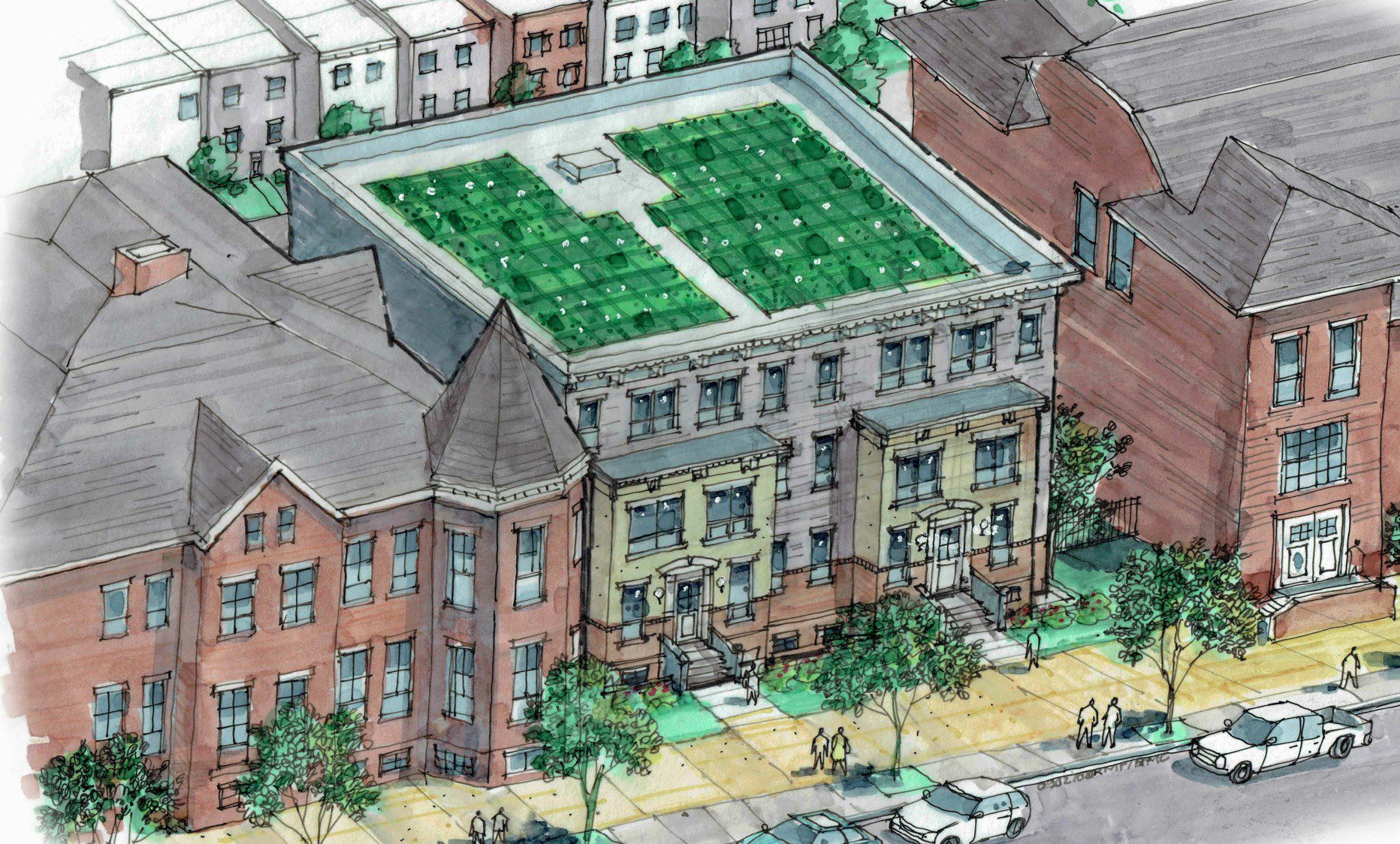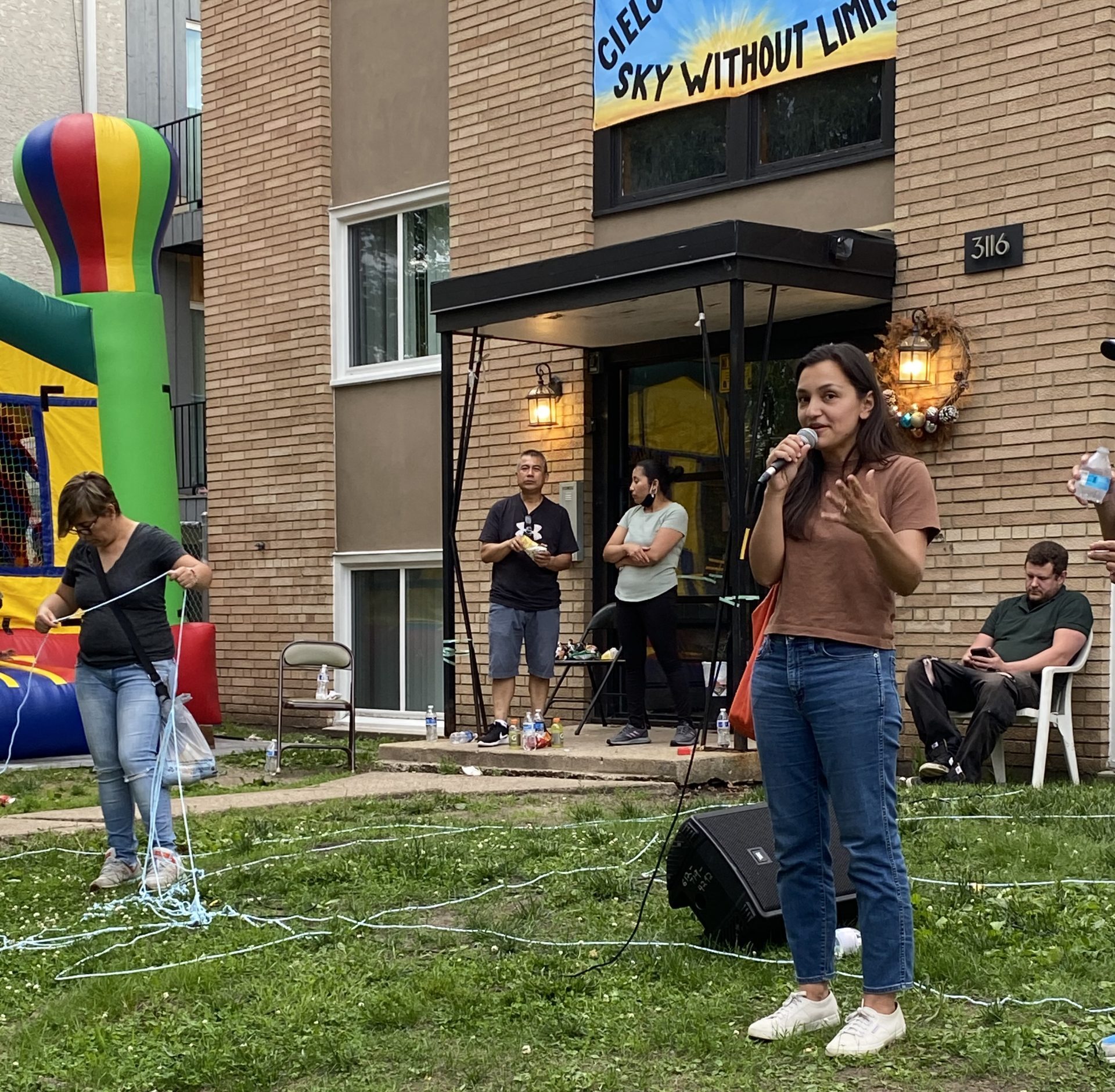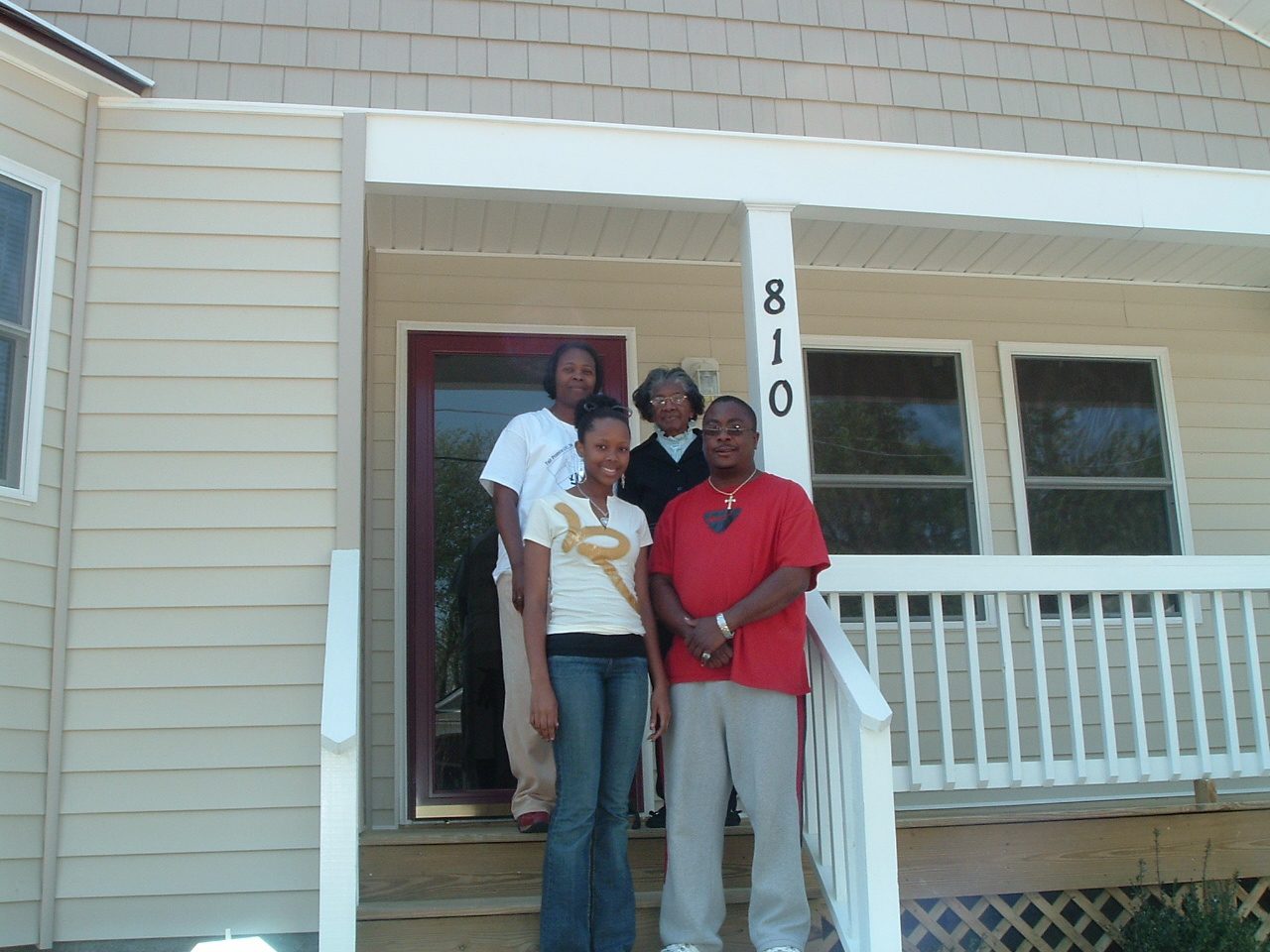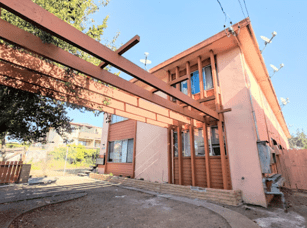This article is part of the Under the Lens series
Community Ownership Takes Center Stage

A rendering of Lebanon Villages at Langston Slater, two historic schools and a vacant parcel that will be redeveloped in Washington, D.C. Douglass Community Land Trust will work on the project along with CSG Urban Partners, Habitat for Humanity, Volunteers of America, and Mt. Lebanon CDC. Rendering courtesy of Douglass CLT
The 11th Street Bridge Park, slated to break ground this year in Washington, D.C., will offer a pedestrian walkway uniting D.C.’s Capitol Hill/Navy Yard with the historic Anacostia neighborhood. In addition to providing a public performance space, the hope is that the park will also forge a connection between one of the district’s most prosperous areas and one of its poorest neighborhoods, which has been historically overlooked.
|
Understanding Community Land Trusts What are CLTs? How do they work? What are the benefits and areas of concern? We break it down for you in this handy explainer. |
Because of the fear residents often have that such investments will lead to neighborhood change and displacement, the nonprofit Building Bridges Across the River (BBAR) held more than 200 meetings over two years for residents to express their thoughts and give feedback on a proposed equitable development plan to accompany the park. One of the things the resulting 2015 plan called for was a community land trust.
“Realizing this project would significantly increase property values, it became clear that a plan was needed to preserve existing affordable housing in Anacostia and to prevent low-income residents from being displaced,” says Ginger Rumph, executive director of the Douglass Community Land Trust (CLT), which was created to fill that role. “In 2017, we had over two dozen residents from east of the Anacostia river form an advisory committee that worked to make the Douglass CLT a reality.”
In 2019, Douglass CLT, named after Frederick Douglass, who hailed from Anacostia, was incorporated as an independent nonprofit membership organization. Fifteen of the original residents who helped bring the CLT to fruition now serve on its board of directors. JPMorgan Chase and Citi served as the CLT’s initial equity sponsors.
Though Douglass CLT was initiated with a focus on communities east of the Anacostia River, it operates citywide with an explicit commitment to racial and economic equity, displacement prevention, and closing the racial wealth gap. “While the demographics of D.C. continue to evolve, our aim is to make D.C. an equitable place where everyone can stay and thrive—and specifically low-income Black and Brown residents who have contributed to making D.C. the thriving community it has become but have not benefited from the economic prosperity in nearly the same proportion as their white counterparts,” says Rumph. The choice to be citywide rather than just in the neighborhoods that gave rise to it is partly due to “the critical need for affordable residential and commercial space that exists in every ward,” explains Rumph, “but also for operational sustainability. A plethora of smaller CLTs would be tremendously difficult to sustain from both a programmatic and financial perspective.”
To maintain neighborhood-level community control, Douglass CLT is looking to a chapter model, though it is not yet in place. Rumph expects chapters will be useful for “community organizing, helping to grow the membership/build bench strength, education and information sharing; expanding partnerships and extending resources, identifying properties for development or stewardship, and all-around supporting the ‘collective stewardship’ that happens post acquisition.” Meanwhile, the CLT is partnering on projects that have aspects of community control embedded, whether it’s tenants exercising their right to purchase under DC’s Tenant Opportunity to Purchase Act, or partnering with mission-aligned developers that have done their own thorough community engagement process.
Douglass is also thinking about how to double down on community control and shifting power to those who have been historically left out of decision making through its membership and tripartite board structure. All members must affirmatively sign up for membership and share in and affirm the purposes of the land trust. The organization has hired a director of engagement to actively build membership from within its existing portfolio and to engage community residents who are at higher risk for displacement. “We do have general members who are more affluent and act more like supporters,” says Rumph, but she notes that the CLT’s bylaws are structured so that the balance of power is not tilted toward them. CLT lessees (members whose primary residence or place of business is a property owned or otherwise being stewarded by the CLT) are the only members who vote for CLT lessee board representatives, but both lessee and general members can vote for general representatives, giving the general members some additional accountability to the CLT’s core constituents.
Members elect the board of directors, vote on bylaws changes, review the annual report, and can serve on the board of directors and/or committees, where they can help set priorities and strategies. “Because members have legal standing to correct course if the organization goes astray, they serve as guardians for the community and make sure everyone benefits from the community development generations from now,” says Rumph.

Savannah Preservation Apartments pre-renovation. The 65-unit apartment complex was saved from market-rate conversion by residents exercising their tenant purchase rights in D.C. with developer NHT-Communities in partnership with Douglass CLT. They are the first rental to come into Douglass CLT’s portfolio. Photo courtesy of Douglass CLT
In 2019, the 65-unit Savannah Apartments in the Congress Heights neighborhood marked the community land trust’s first investment to support community control of housing in Wards 7 and 8. Two years later, Douglass CLT now has properties in six of the eight wards in Washington, D.C.
[RELATED: Lessons from 20 Years of Enabling Tenants to Buy Their Buildings]
With 219 units in its current portfolio, and more in the pipeline, Douglass CLT received a boost in April when D.C. Mayor Muriel Bowser announced that the city would be partnering with the land trust to develop the historic Langston and Slater Schools site, which was once two elementary schools for African-American students. The project is slated to build 55 new homes, consisting of affordable townhomes and multifamily rental apartments.
Rumph considers public and private sector relationships, a strong and activated resident membership, and hitting a goal of 750 units in its portfolio as what will allow Douglass CLT to achieve the scope and sustainability needed to achieve lasting community change. “Our long-term goal is to get to a level of earned revenue that will decrease our need for philanthropic support,” she says.
For Rumph, one of the most satisfying aspects of the land trust is the ability to keep housing costs affordable for longtime residents. She recounts stories of several families who feared they would have to relocate, but thanks to the CLT, have been able to remain in their apartments. One resident of the Savannah Apartments told The Washington Post that she and her parents had lived in their rental unit for 26 years and thanks to the CLT, they would be able “to stay in a place that we have called home.”
|
Please consider supporting our small and dedicated team on Patreon. |




Comments